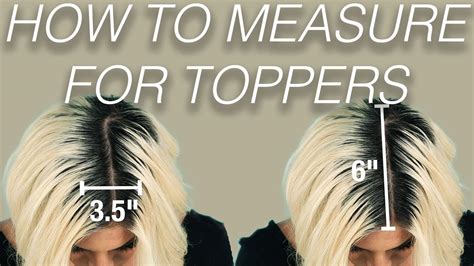Uncover the Secrets of Toppers: A Comprehensive Guide
Introduction

Hair loss impacts millions of individuals, leaving them seeking effective solutions to regain their confidence and self-esteem. Hair loss toppers have emerged as a revolutionary alternative to invasive procedures and ineffective medications. This comprehensive guide delves into the world of hair loss toppers, exploring their benefits, applications, and essential considerations for successful usage.
Benefits of Hair Loss Toppers
- Instant Volume and Coverage: Toppers instantly add volume and conceal thinning areas, giving the illusion of fuller, thicker hair.
- Natural Appearance: Advanced topper designs mimic natural hair growth patterns, providing a seamless and realistic look.
- Versatile Styling Options: Toppers allow for endless styling possibilities, from sleek ponytails to voluminous curls.
- Non-Invasive: Unlike surgical hair restoration procedures, toppers are non-invasive, offering a safe and convenient solution.
- Cost-Effective: Compared to surgery or laser treatments, toppers provide a more affordable option for addressing hair loss.
Applications of Hair Loss Toppers
- Androgenetic Alopecia: Toppers effectively conceal the thinning caused by male or female pattern baldness.
- Telogen Effluvium: Toppers restore volume and fullness during temporary hair loss due to stress, hormonal changes, or illness.
- Alopecia Areata: Toppers provide coverage for patchy bald spots caused by autoimmune disorders.
- Trichotillomania: Toppers help hide hair loss resulting from compulsive hair pulling.
- Medical Conditions: Toppers offer a discreet solution for hair loss caused by chemotherapy or other medical treatments.
Types of Hair Loss Toppers
- Monofilament Toppers: Feature a single layer of hair fibers, creating a natural hairline and scalp appearance.
- Lace Front Toppers: Provide a more realistic hairline with transparent lace that blends seamlessly with the scalp.
- Human Hair Toppers: Made from 100% human hair, offering the most natural look and feel.
- Synthetic Hair Toppers: More affordable than human hair toppers, but may be less natural-looking.
Choosing the Right Hair Loss Topper
- Size: Measure your head circumference to determine the correct topper size.
- Length and Density: Consider your desired coverage and the length of your existing hair.
- Hair Texture: Match the hair texture of the topper to your own hair for a cohesive look.
- Color: Select a color that closely matches your natural hair color or opt for a bolder choice.
How to Apply a Hair Loss Topper
- Prepare Your Hair: Brush your hair to remove tangles and create a smooth surface.
- Position the Topper: Place the topper on your head and adjust it until it feels secure and comfortable.
- Secure the Topper: Use clips or tape to firmly attach the topper to your hair.
- Blend the Edges: Gently blend the edges of the topper with your own hair using a brush or comb.
Common Mistakes to Avoid
- Choosing a Topper That’s Too Large: Avoid toppers that are too loose, as they can slip and cause discomfort.
- Not Blending the Edges: Failure to blend the edges can create a noticeable transition between the topper and your own hair.
- Overstyling the Topper: Excessive brushing or heat styling can damage the hair fibers.
- Wearing the Topper for Too Long: Remove your topper regularly to give your scalp a break and prevent irritation.
Maintenance and Care
- Regular Cleaning: Wash your topper every 10-12 wears using lukewarm water and a gentle shampoo.
- Conditioning: Apply conditioner to the topper after washing to keep it soft and manageable.
- Air Drying: Allow the topper to air dry completely before storing it.
- Storage: Store your topper in a box or bag designed for hair storage.
Top 10 Tips for Successful Topper Usage
- Customize the topper to your specific needs and preferences.
- Invest in high-quality topper materials for durability and a natural look.
- Practice applying and blending the topper for a seamless transition.
- Avoid products with alcohol or sulfates that can damage the hair fibers.
- Use a wide-toothed comb or brush to prevent tangling.
- Limit heat styling to preserve the lifespan of the topper.
- Remove the topper before sleeping to prevent damage and irritation.
- Trim split ends or damaged hair to maintain the topper’s health.
- Seek professional help from a cosmetologist or hair loss specialist for expert advice.
- Embrace your confidence and enjoy the transformation that a hair loss topper can bring.
Conclusion
Hair loss toppers offer a transformative solution for individuals affected by hair loss. By understanding the benefits, applications, and essential considerations, you can select and use a hair loss topper that restores your confidence and empowers you to embrace your natural beauty.
